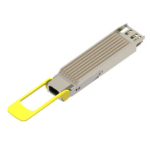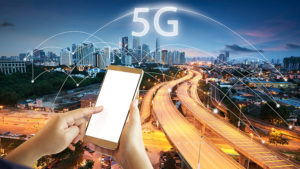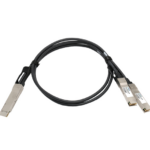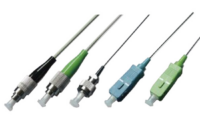High-Speed Networking (400G/800G and Beyond): The Future of Data Center Network

As data centers continue to evolve to meet the demands of cloud computing, artificial intelligence (AI), machine learning (ML), and the Internet of Things (IoT), the need for faster, more efficient, and scalable networking solutions has never been greater. High-speed networking, particularly 400G NDR InfiniBand and 800G NDR InfiniBand technologies, is emerging as a cornerstone of modern data center architectures. This article explores how high-speed networking is shaping the future of data center networks and why it is critical for the next generation of digital infrastructure.
The Need for High-Speed Networking?
The exponential growth of data, driven by trends such as 5G, AI, and IoT, has placed immense pressure on data center networks. Traditional networking solutions, such as 10G Transceivers and 40G Transceivers, are no longer sufficient to handle the massive volumes of data generated and processed daily. Key drivers for high-speed networking include:
Bandwidth Demands: Applications like video streaming, big data analytics, and real-time AI/ML require significantly higher bandwidth.
Low Latency: Emerging technologies, such as autonomous vehicles and augmented reality, demand ultra-low latency.
Scalability: Data centers must scale efficiently to support growing workloads without compromising performance.
Energy Efficiency: High-speed networking solutions must also address power consumption to support sustainable operations.
What is High-Speed Networking?
High-speed networking refers to the use of advanced technologies to achieve data transfer rates of 400G, 800G, and beyond. These technologies leverage innovations in optical transceivers, switches, and cabling to deliver unprecedented performance. Key components of high-speed networking include:
Optical Transceivers: Devices like 800G QSFP-DD Transceivers and 400G OSFP transceivers enable high-speed data transmission over fiber optic cables.
Switches and Routers: High-capacity switches and routers are designed to handle the increased throughput of 400G and 800G networks.
Advanced Cabling: Fiber optic cables, such as single-mode and multi-mode fibers, are essential for supporting high-speed data transfer.
Benefits of High-Speed Networking
Increased Bandwidth: 400G and 800G networks provide the bandwidth needed to support data-intensive applications.
Reduced Latency: High-speed networks minimize latency, enabling real-time data processing and analytics.
Improved Scalability: These networks allow data centers to scale efficiently, accommodating future growth.
Energy Efficiency: Modern high-speed networking solutions are designed to reduce power consumption, supporting green data center initiatives.

Applications of High-Speed Networking
Cloud Computing: High-speed networks are essential for connecting cloud infrastructure and delivering seamless services.
AI and Machine Learning: AI/ML workloads require massive data transfers and low latency, which high-speed networks can provide.
5G Networks: The rollout of 5G depends on high-speed networking to handle increased data traffic and connectivity demands.
Edge Computing: High-speed networks enable efficient data transfer between edge devices and central data centers.
Challenges and Considerations
While high-speed networking offers numerous benefits, there are challenges to consider:
| Challenge | Description |
|---|---|
| Cost | Deploying 400G and 800G infrastructure can be expensive, requiring significant investment in hardware and cabling. |
| Compatibility | Ensuring compatibility between new high-speed technologies and existing infrastructure can be complex. |
| Heat Dissipation | High-speed networking equipment generates more heat, necessitating advanced cooling solutions. |
| Skill Gaps | Managing and maintaining high-speed networks requires specialized knowledge and expertise. |
The Future of High-Speed Networking
The future of data center networks lies in the adoption of high-speed networking technologies like 400G, 800G, and beyond. As data demands continue to grow, these technologies will play a pivotal role in enabling scalable, efficient, and future-proof data center architectures. Innovations in optical networking, silicon photonics, and AI-driven network management will further enhance the capabilities of high-speed networks.
In Conclusion
High-speed networking is not just a trend; it is the foundation of the future data center. By embracing 400G, 800G, and beyond, organizations can build networks that are capable of meeting the demands of tomorrow’s digital world. As the industry continues to innovate, high-speed networking will remain at the forefront of data center evolution, driving efficiency, scalability, and performance.800G AOC and 800G DAC as key components of high-speed networking, provide cost-effective and efficient solutions for a wide range of applications.
If you want to learn more about AOC (Active Optical Cables) and DAC (Direct Attach Cables), you can refer to this article.
Explore more: For more information on fiber optic connectors and related products, visit TARLUZ.com or contact our experts for personalized advice.


